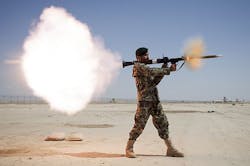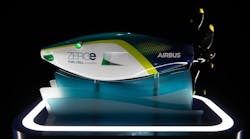Officials of the Office of Naval Research (ONR) in Arlington, Va., released a solicitation last week (ONR-BAA-15-0004) for the Target Processing Center Sensor Correlation and Fusion project.
This initiative seeks not only to enhance detection of enemy artillery, rocket, and mortar rounds and reduce false alarms, but also to speed counter fire to destroy enemy projectiles, artillery emplacements, and launchers.
The Target Processing Center project is part of ONR's Future Naval Capability (FNC) program, which seeks to automate how Marines pinpoint the launch and impact points of artillery, rocket, and mortar rounds on the battlefield, and respond to attacks.
The solicitation issued last Thursday is asking industry to submit white papers and proposals on two products: how to fuse sensor data from several different radars to predict where incoming shells will hit, and launch counter-attacks quickly; and computer algorithms to improve the detection and classification of incoming artillery, rocket, and mortar rounds without false alarms.
The ability to detect, track, and react to incoming artillery, rocket, and mortar rounds is becoming increasingly difficult, Navy researchers explain. While increased use of counter-artillery radar is widening battlefield coverage, it also complicates and slows how to respond because of a large number of false alarms.
Related: After nine years, Marine Corp finally may have full production of G/ATOR radar in sight
Today's target-processing centers lack the automated data processing, fusing, and correlation capability to take advantage of the available radar data, researchers explain. The current method of correlation and fusing typically is done manually, which slows the process and introduces errors.
Marine Corps counter-battery radar platoons today typically use the AN/TPQ-46 Firefinder radar, the AN/TPQ-49 Lightweight Counter Mortar Radar (LCMR), and the AN/TSQ-267 Target Processing Set command and control node, and communicate radar data over AN/PRC-119, AN/VRC-90, VRC-92 SINCGARS, and EPLRS tactical radio equipment; AN/PRC-117G wideband multiband multimission tactical radios; Advanced Field Artillery Tactical Data System (AFATDS) fire support command and control; and the Joint Tactical Common Operational Picture Workstation (JTCW).
Today this sensor and communications infrastructure is becoming insufficient for timely counter-battery detection and response, researchers say. The eventual introduction of unmanned aerial vehicle (UAV) sensors into the counter-battery mix could make today's problems even worse.
To meet these challenges, Navy researchers are asking industry for ways to improve the detection and identification of incoming artillery, rocket, and mortar rounds; improve sensor networking performance; enhance sensor placement; and for ways to speed the entire counter-battery decision cycle.
White papers are required before submitting full proposals.
Companies interested should email white papers no later than 19 Dec. 2014 to the Navy's Martin Kruger at [email protected], and upload white papers online at https://onroutside.onr.navy.mil/aspprocessor/isr30b/.
Email full proposals no later than 6 Feb. 2015 to the Navy's Martin Kruger at [email protected], and upload white papers online at https://onroutside.onr.navy.mil/aspprocessor/isr30b/.
Email technical questions to Martin Kruger at [email protected]; business questions to Ana Isabel Lugaro at [email protected]; and contracting questions to Diana Pacheco at [email protected].
More information is online at https://www.fbo.gov/spg/DON/ONR/ONR/ONR-BAA-15-0004/listing.html.



